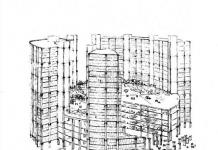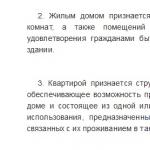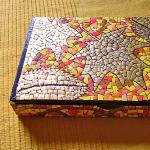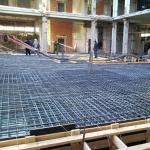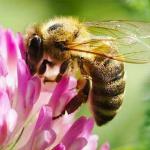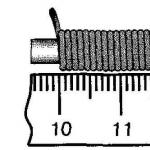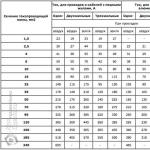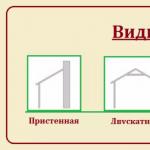Beekeeping today is an activity that generates income and useful products. If the requirements for beekeeping, care recommendations, and creating bee colonies are correctly followed, it is possible to achieve good results.
The first question that interests a novice beekeeper is how to breed bees correctly and by what methods? The creation of bee colonies takes place in several stages. The first is preparation for breeding.
- Increasing knowledge about the characteristics of insects, care, upcoming work, possible pests.
- Being near plants, there are a sufficient number of them.
- Open access to honey plants for insects. If there are no plants nearby, then it is necessary to organize regular transportation to such places.
- Preparation of large financial investments.
- Purchases of equipment, feed, hives.
- Construction of premises, a workshop, arrangement of a winter hut.

Raising bees at home is not without its pros and cons. Disadvantages: waste of time in the absence of skills and knowledge; an investment that will not pay off over a long period of time.
Where to begin? Man has been successfully breeding bees for a long time, so the accumulated experience helps novice beekeepers. Before starting the development of a beekeeping business, it is recommended to take into account the area in which the apiary will be located. After choosing a location, it is recommended to take into account possible problems.
Experienced beekeepers advise buying not one bee colony, but several (four is enough). This will avoid unforeseen circumstances, such as insect disease. An obvious advantage is the prospect of development into a large apiary. One bee family usually consists of 20 to 100 thousand individuals. The quantity depends on the season and the power of the swarm.
It is recommended to learn information about every aspect of the beekeeping business from manuals, instructions, as well as from experienced craftsmen. To do this, it is advisable to join the beekeepers’ union, whose representatives actively help newcomers and share their accumulated knowledge.
Getting rid of fear is an important factor in preparation. The main thing is to know how to behave with insects. Basic rules: do not panic, do not make sudden movements, do not show aggression, do not scream. If the bees become restless, a smoker is used to calm them down. Over time, individuals get used to the owner.
Main stages of the preparatory period:
- studying information about beekeeping;
- selection of a site that will meet the standard;
- purchasing the right breed of bees, taking into account climatic conditions, productivity, and health;
- purchase of equipment, tools, arrangement of premises and workshop.

Compliance with the listed steps will eliminate serious problems and difficulties that may arise along the way of organizing an apiary.
Beekeeping Basics
During preparation, the basic rules are studied, the implementation of which is mandatory:
- The hives are placed in a windless, quiet area. The site must be surrounded by trees and bushes, this will protect the bees from diseases.
- Ensuring normal illumination, for which the hives are turned in a south-east direction.
- Fencing the apiary with a palisade or fence 2 meters high.
- Maintain distance from roads, highways, enterprises, and noisy objects. If an apiary is being built in a country house, then it is necessary to take into account the frequency of neighbors appearing in nearby areas. If there is a permanent presence, it is better to organize houses for bees in another place.
- Selecting an earthen surface taking into account soil moisture. It is undesirable to establish an apiary in lowlands, swampy, damp places.
 Mandatory equipment: smoker, gloves, brush, suit to protect the body and face, chisel, knife, honey extractor.
Mandatory equipment: smoker, gloves, brush, suit to protect the body and face, chisel, knife, honey extractor.
Beekeeping method for beginners
Rotational breeding, or keeping bees year-round, is a common method that is great for beginners. It is used to preserve the health of bee colonies during wintering and to prevent disease. Main stages:
- Spring honey collection is carried out in places with large concentrations of honey plants. The hives are regularly cleaned of excess honey and young insects, as bees tend to swarm.
- Formation of new bee colonies - transfer of queens and young animals to prepared premises. After collecting individuals around the queen bee, they are transferred to the hive. The resulting colony is then regularly checked to assess the quality of the brood. If the uterus does not take root, then it is replaced.
- Preparing bee colonies for wintering - inspecting the hive, forming a nest, preparing food, preventing diseases.
- Wintering control - inspection and feeding.
Before the onset of the winter season, the queens are separated and placed in cages where artificial swarming is created. Strong newly formed families are united with old individuals, then preventive measures are taken to prevent diseases.
Where can you keep bees?
The main requirement for breeding sites is suitable climatic conditions. The area is selected with abundant vegetation, where honey plants bloom at different times. In the absence of such a site, pavilions on wheels for transportation are organized. It is better to place the apiary away from populated areas.
- The beekeeper is responsible for causing harm to the health of his neighbors, so he needs to monitor his “pets.”
- Placement of hives taking into account the distance from the edges of the site (at least 10 meters). If the area is small, the apiary is surrounded by a fence 2 meters high.
- Limitation on the number of bee families, which is associated with the required area of land for each family.
- Creation of a passport for the apiary, which is issued by the veterinary service. After receiving it, you are allowed to sell beekeeping products.
- Keeping journals and diaries, which will make work easier, will help identify the development of individuals and under what conditions more honey is produced.
- Breeding peaceful breeds, as they are less susceptible to swarming.
- Insect health control.
 When organizing an apiary in populated areas, it is necessary to avoid areas near enterprises and large crowds of people.
When organizing an apiary in populated areas, it is necessary to avoid areas near enterprises and large crowds of people.
Hive equipment
Requirements for hives: spaciousness, lightness, ability to fold and reassemble, strength, dryness. For novice beekeepers, the most convenient form of hive is a lounger. This will allow you to monitor the development of bee colonies.
When it comes to equipment, there are two options: purchasing ready-made houses and self-construction. With the first option everything is simple, but with the construction you will have to work hard.
The boards are of high quality, made from soft wood. You will also need tools, drawings, paint. The color of the dye is yellow, green, blue or purple. This is necessary to preserve the wood and attract insects.
Mandatory items when equipping bee houses: cushions on synthetic padding, screen boards, frames with wire, boxes, barriers for entrances.
Pests
The life of bees is hampered by pests and enemies:
- mole. To prevent this, hives are regularly cleaned and healthy bee colonies are raised. If moths are detected, spare frames are treated with smoke and placed in vacant houses. Good bedding - mint, nut leaves, hops;
- rodents. They cause harm only in winter, which consists of damaging honeycombs, eating beebread, and live insects. The appearance of rodents often leads to the death of families. Control method: traps, baits, floors in wintering hives made of clay with broken glass;
- ants. Method of protection - treating the legs with a special chalk, pencil or creating a moat with water;
- . The control method is to make holes in bee houses of small diameter.

Pests cause great damage to beekeeping, so protection against them is one of the beekeeper’s priorities.
Income and expenses
When the idea of starting a beekeeping business arises, the question involuntarily arises: how profitable is it? Approximate expenses, according to experts, for 20 bee colonies will be $3,700 in the first year. Costs go to insects, equipment, tools, arrangement of premises and hives.
With proper arrangement of the apiary, in the first year you can collect 1200–1500 kg of bee products: honey, bee bread, wax, propolis, and others. The profit from this is up to $4,600. This leads to payback already in the first season, and profits will only grow every year.
The rapid expansion and receipt of income from the operation of the apiary depends on the correct breeding, the chosen site, and the arrangement of the hives. Beekeeping is a profitable business, so it’s worth taking a chance when this idea pops into your head.
Keeping bees may seem easy for beginners. However, this is not entirely true; the issue should be approached thoughtfully and with careful preliminary preparation. In Russia, quite a few people are interested in beekeeping, and many of them do not have specialized education. All of them are united by a love of nature, a respectful and thrifty attitude towards it, as well as the absence of allergic reactions to bee venom.
Every year there are more and more people who want to organize bee breeding. "Where to begin?" - they think. Not many people do a thorough analysis before opening this case. It is not uncommon for an unexpected desire to breed bees to turn into insurmountable obstacles: an allergic reaction to bee venom, a fear of being stung, or a lack of necessary conditions for keeping them. Not everyone is eager to work from dawn to dusk, but there will be plenty of such worries. As a result, such people suffer losses, bee families die, and all the work done is in vain. Simple recommendations will help you avoid sad developments.
Who can do beekeeping?
How to learn beekeeping for beginners? Where to begin? The first thing you need to do is evaluate yourself. A true bee lover must have a combination of many qualities:
- knowledge of nature and its laws;
- care when handling insects;
- nerves of iron and endurance of steel (to endure stings, of which there will be quite a few).
Beekeeping skills come with time. The difficulty lies not so much in learning special techniques for caring for bee colonies, but in the ability to select those that are best adapted to existing climatic conditions.
Amount of time required for bees to occupy themselves
How to calculate the time required for beekeeping for beginners? Where to start accounting for it? It all depends on the level of skill of the beekeeper and the automation of his movements when performing similar operations. The statistics collected while studying this issue are as follows: caring for 1 bee colony will require 834 minutes during 1 season. Simple calculations allow us to establish that a beekeeper spends 5 to 6 hours a week on 10 hives at the beginning of the season.

Number of bee colonies
Considering bee breeding for beginners, the master class will dwell in more detail on the issue of the number of beneficial insects. In this matter, one must proceed from the specific conditions existing on the site. The optimal number for an inexperienced beekeeper would be from 3 to 6 bee colonies. Such a number of hives will make it possible to thoroughly develop the technology of insect care, immediately looking at the future.
In this case, the beekeeper will immediately plan stream work with bee families, not limiting himself to just one. Due to lack of experience, a person may not be able to keep track of a large number of hives. The more active the start of bee breeding is, the closer the moment when the apiary will develop to the planned size. This strategy does not guarantee the absence of errors (including fatal ones), but risking dozens of bee colonies is much more dangerous.

Place for an apiary
Have you already decided in which area the bees will live? Breeding and keeping for beginning beekeepers is not complete without solving this issue. It is good if a novice beekeeper has the opportunity to choose a site for the location of the hives. It is better to choose the one whose conditions are closest to those native to bees. It is desirable that there are hills, lowlands and other relief elements nearby.
It’s good if there are wild honey plants within a radius of 2 km from the apiary. A positive aspect would be the presence of natural protection from prevailing winds, for example, a slope or planting of trees. The apiary should be illuminated by the sun's rays, and not hide in the shadow of buildings or forests.

Apiary area
The effect of area on beekeeping may not be entirely clear to beginners. However, there are standards for the placement of hives: the minimum distance is from 3 to 4 m. If the bee houses are in rows, then the distance between the latter must be maintained from 4 to 6 m.
Not everyone has such expanses of land at their disposal. In many summer cottages it is necessary to place hives much denser. They are placed in all available places: under trees, along buildings on the sunny side, near the fence, under special canopies. The installation density of bee houses reaches 1 per m2.

What to wear?
To master beekeeping for beginners (the photo of the process demonstrates this) it is necessary to wear special clothing, which has quite stringent requirements:
- hygiene;
- convenience;
- protection of all parts of the body from bees.
There are several options for special beekeeper clothing:
- Bees in the southern regions are characterized by a peaceful nature, so the beekeeper is wearing only a net covering his face and a white robe.
- Central Russian bees are more aggressive, especially during their transportation. The robe has been replaced by a thick gray overall. Bees are irritated by clothes of dark shades with pile (they get tangled in it). Their reaction to sweat, gasoline or smoke that impregnates the fabric will not slow them down.
- Abroad, beekeepers additionally wear rubberized or thick gloves. But inspecting the hives in them is extremely inconvenient.
Experienced beekeepers have learned to monitor the behavior of insects and, noticing the first signs of irritability, calm them down with a smoker. The reaction of the bees depends on the cleanliness, accuracy and dexterity of the beekeeper. You can often find a bee lover working with them without a net. Such people try to cover their hair with a white headdress.

The event log
Keeping records of work performed, the state of affairs in bee colonies, and much more is much easier with the help of beekeeper diaries. Keeping bees for beginners is not complete without the results of inspections, which are entered into a journal with the obligatory recording of actions taken and errors detected in order to improve the operation of the apiary in the future. Each family is considered individually in order to calculate the most productive and powerful among them. In the future they will be used in breeding work.
Each bee family is given up to two pages in the magazine. The title includes its serial number and uterus data (year of birth, breed, origin). Records are kept in columns, their approximate names are as follows:
- Date of inspection.
- What they gave (honeycombs, frames, syrup, etc.).
- What did they take (honeycombs, bees, brood).
- What's left.
- Results of the year.
Individual beekeepers make notes on cards kept under the roof of each hive. When starting an inspection, the beekeeper looks at the results of the previous one, remembers the work done and plans further actions.

Weather
Does weather affect bee breeding? This is a good guide for beginners and experienced beekeepers. Depending on what is currently outside the window, work is planned for the current day. Based on long-term forecasts, important activities are prepared, from transporting bees to studying the nature of the main bribe.
It is not always possible for a beekeeper to obtain up-to-date information about the weather for the near future, because he is far from the city or simply does not have enough time for this. How then should we proceed? Rely on your own intuition and folk signs passed down from time immemorial.
Beekeeping for beginners in the Urals
The Urals are rich in honey plants. On its territory there is about half of the area occupied by linden. Cultivated plants are: buckwheat, sunflower. The combination of natural and agricultural honey plants makes it possible to obtain a good yield of commercial honey in the apiaries of the Urals.
One of the important aspects of Ural beekeeping is the wintering of insects. Here they try to extend the honey harvest period, because then the family will better survive the cold season.
The Southern Urals are the territory of beekeeping. Here this method is used in 95% of cases. The most common breed of bees in the region is Central Russian. The key task of farmers is to expand the territories occupied by honey plants. With their help, it is possible to increase the productivity of apiaries in the Urals.
Since ancient times, local honey has been considered the best in the country. This result comes at the cost of incredible effort. Long winters and short summers have a significant impact on the life of bees. Only a few months are favorable for insects. The demands on families here are higher because the honey collection period is shortened.
Each zone of the Urals has its own characteristics of bee breeding. The Northern Urals, with frosts and heavy snow cover, cold summers with a lot of precipitation, are no less severe in relation to insects, which have to collect honeydew from spruce and fir trees. It is better to locate the apiary in a meadow or forest edge.
The Middle Urals are not much more comfortable for bees due to unpredictable weather. The content is not much different from the northern regions. The Southern Urals are a good place for bees to live. Apiaries are actively being revived, and fields of honey plants are being restored. Such events are important for the country, because honey and other bee products are actively used in the treatment of a number of diseases, as well as for food purposes.
Honey is an expensive product. Its price lies in the painstaking nature of collection and in quantity. Many residents of our country and many others decide to acquire their own bees to produce honey. So how to start raising bees at home.
First steps
The first place to start is with the hives. A hive is a bee’s home, in which they “store” honey, raise and care for queens, and overwinter, enduring extreme cold. The design of such a “house” plays a big role.
Important! Beginners entrust the construction to an experienced beekeeper or purchase factory-made “houses”.
Most hives are divided into 2 types: single-body and double-body. The former have a small volume, and therefore are ideal for wintering bees in northern regions where there is a strong drop in temperature. Double-hulled ones are used in the summer for breeding colonies and hatching new queens.
The body with the queen is placed in the upper half of the hive, where she begins to grow, receiving more heat. After the first young animals appear, the buildings are swapped and feeding is installed on top. This technique allows you to quickly increase the number of individuals in the family and increase honey productivity.
The note! Of course, bees can winter in both single-hull and double-hull hives, it’s just that the energy savings of the former are much higher.
For the winter, all hives are moved to a dry and warm room if the temperature drops below -15 degrees. This will prevent hypothermia of the hive and the death of a significant part of the club.
Outdoors in winter
Many novice beekeepers breed bees in Tsebro. Vladimir Tsebro is one of the most famous beekeepers in the CIS. He argued that bees would be able to winter just fine outside, without special shelters.

After the body, the queen is placed in the middle tier, where she will be heated by insects on both sides. Such a hive can accommodate up to 4-5 families, which can easily heat themselves even in the harshest winters. Feeding in bags is installed in the upper part of the hive.
Beekeeping in Tsebro will allow you to get more honey, but there will also be more difficulties with maintaining three-hull hives. For the winter, the upper entrance is covered with a glass plate, and the lower one with a wooden strip, leaving 5-6 mm for ventilation.
Where to put the hives

In addition to the requirements for the “bee houses” themselves, there are also a number of necessary rules for their location:
- Bees are afraid of drafts. It is necessary to install evidence behind high fences (from 2 meters), where it will always be quiet and warm.
- The distance between hives in a row should be 5 meters. The rows are spaced 6 meters apart.
- “Houses” should be located at a height of 40 cm from the ground, otherwise morning dew and fumes will enter the hive, and moisture is more destructive for bees than cold and wind.
- Traffic near the bee housing should be minimal, no dogs or cats.
In such conditions, bees will be able to live and reproduce normally, and pumping honey will bring in good money. Proper beekeeping is an exciting activity that brings a lot of pleasure, honey and money as a business. But where to get bees, how to make them live in a hive?
Catching bees

Getting started with beekeeping involves purchasing or catching animals. Buying a bee bag at the market or a hive from a neighbor is not difficult, but you can also use the method of beekeepers and catch the insects yourself.
The note! When there are a lot of bees in a hive, both domestic and wild, half of the insects fly away along with the old queen in search of a new home, and the rest - the young ones - remain in the same hive. Honey plants looking for new housing are called strays.
To catch a stray hive you need a simple device - a hive. A swarm is a trap for bees that has a semicircular shape and a door that can be slammed when the prey is inside the structure. If you don’t know how to make a swarm with your own hands, buy it.
The trap is installed at a height of 5-6 meters, in the attic or tree. For greater efficiency, you can place a feeder with syrup in the swarm so that the bees can smell it.
The note! Swarming begins 10 weeks after flight. Therefore, the swarm is set 2 weeks before this date and the trap is checked every 2 weeks for the presence of new individuals. Swarming is a natural process in the life of bees, and therefore it is difficult to avoid. Without swarming in the apiary, most of the colonies may fly away during swarming, which will be an incredible loss for the beekeeper.
If bees are caught in the trap, the door (entry) is closed and the bees are transferred to the home evidence. That's it, the bees are ready to make honey. But one or two hives in an apiary will not be enough, so you need to think about the reproduction of insects.
Queen and young

There are many ways to breed bees in an apiary, but for beginners, the best option is to make layering. The process itself is not complicated, necessary for any apiary.
- To create a new family, you need to remove 2 frames with brood and 2 food frames from the hive.
- These frames are installed in the new hive and separated from the “parent” hive.
- Then it is not the fertile uterus that is placed in the new family, and therefore the adult individuals return to the old uterus in the “parental” hive, and the young ones create a new colony.
The note! Such a small, artificially formed family is called a nucleus. - After 2-5 weeks, the young queen grows eggs, replenishing the family with new individuals.
This kind of bee breeding does not require any special knowledge or skills from a novice beekeeper. Then the young bees only need care and proper maintenance. As soon as the bees begin to produce honey, this is followed by the process of transporting honey.
Extraction of honey

It is necessary to identify honeycombs filled with honey. This can be done simply, visually, just by looking at the frames inside the hive. As soon as the bees have clogged the honeycombs with honey by 1/3, you can start pumping.
Interesting fact! Since 1992, Ukraine has ranked first in the world in terms of the amount of honey received per year.
- Get a frame nose; If you don’t know how to make a frame stalk with your own hands, contact experienced beekeepers or buy it at the market.
- We fill the frame carrier with actually filled frames and transfer it to a room at room temperature.
- Afterwards, he uncorks the honeycombs with a special fork or knife so that the product comes out faster.
- The honeycombs are loaded into honey extractor cassettes.
The note! Honey extractor is a device for pumping out honey without damaging frames and honeycombs. - We start the honey extractor (or turn it manually) at minimum speed, gradually increasing the speed. Under the influence of centrifugal force, honey from the honeycomb will fly out onto the walls of the device.
- A container is placed under the honey extractor into which the honey will flow. After the honey has been collected, the unit must be washed with warm water.
- The note! If, after removing the frame, not all of the bees have been killed, the strongest and strongest are treated with smoke and placed back in the hive.
Now every beginner knows where to start breeding bees, how to care for them and how to collect honey. If you carry out all the procedures step by step, without deviating from the methodology, then in the shortest possible time even a novice beekeeper will be able to please his loved ones or clients with tasty and aromatic honey.
Many people mistakenly believe that raising bees and doing all kinds of apiary work is easy and simple, because this is a kind of quiet and calm activity that also brings benefits in the form of honey, and for those who are especially cunning, even some form of their own small business. In fact, all this is very far from the truth, because caring for your own apiary is not easy work, which is very difficult to master at first. Some joke that it's like some kind of magic.
This article will help beginners, and bee breeding for beginners video - the lesson presented at the very end will tell you all the nuances that a good beekeeper simply needs to know.
Beekeeping where to start?

As a rule, the study of any field of activity begins with this question. First of all, it is worth understanding that it is important to take beekeeping seriously.
To make the right decision, you need to consider all the advantages and disadvantages of such a hobby. Naturally, you have heard much more about the advantages than about how much time and labor is needed to obtain a small amount of honey. It is worth paying attention to the fact that bees, unlike a vegetable garden, will not wait six months until the owner deigns to pay attention to them. Of course, this is not a colossal figure, but experienced beekeepers talk about 5-6 hours a week that they need to devote to their “little charges.” This time corresponds to 10 bee flocks (10 queens). The main thing is to maintain the frequency of care, that is, consistency. You need to be prepared for unforeseen difficulties to arise, be it illness or something else.
One more little tip. This type of activity is best and easiest to do with someone else. Search for like-minded people. The ideal option is to have an experienced beekeeper with about 3 years of experience, who has experienced all the “hardships and hardships” of the bee kingdom. Visit thematic forums and web portals. Watch bee keeping for beginners video
Selecting a location
The first thing a young beekeeper should do is find a suitable place for his apiary. The only criterion in terms of climate is the presence of bees in a given region. You shouldn't try to build a hive where there simply aren't any bees. To quickly get used to the terms of experienced people, remember the word “dot”. This is exactly the place that will be described below.
Bees usually fly about 1-2 km from their hive. This means that within such a radius there must be a sufficient number of flowers, especially the so-called honey crops. Ideally, their flowering periods will be different, so that during the entire honey harvest, the bees have something to profit from.
One general rule: you should choose a place as far away from roads as possible. Firstly, this is a question of the ecological purity of the honey produced, and secondly, the “buzzers” themselves cannot stand noise and unnecessary vibrations.
Excessive sun activity, as well as strong winds, can have a detrimental effect on the life of the hive, which should, if possible, be in the shade.
You should also pay attention to the letter of the law. The fact is that in some places beekeeping is prohibited and is punishable by administrative fines.
If you cannot find an ideal place, you can temporarily transport the hives from place to place. Of course, this is very costly and time-consuming, but the results will be better than if the above rules are not followed.
Nice hive
After watching the “Keeping Bees for Beginners” video, it becomes clear that proper preparation of the hive is extremely important to obtain optimal results. There are two options, the first of which is to purchase a ready-made frame hive. Another, more labor-intensive one is to make. The choice is yours.
In addition, whether a purchased hive or a home-made hive, it is necessary to paint it correctly. A special varnish-paint should protect it from moisture and at the same time make it more visible from a distance for its “little charges.” Given the specificity of bee vision, blue, yellow, green and purple are recommended. There is no need to make it red or black, these two shades are indistinguishable and practically invisible to bees.
You should not forget about the beekeeper’s inventory and equipment: smoker, overalls, and so on.
Let's move on to the most interesting question: where can we find bees? The simplest solution to this issue is purchased workers.
For the more intricate and active ones, the option of catching your own swarm is suitable. In fact, this task is not as difficult as it might seem at first glance. Luck plays a big role. You will need to take an empty hive and bait with you; mint (melissa) is best. Another popular option is queen bee fishing.
This is exactly what the “first steps” of a young beekeeper look like. There are still many things to do and pitfalls ahead, but “hard trouble is the beginning.” The main thing is not to forget about constant attention and the bees will reward you with copious amounts of honey.
We hope you now know how to start bees from scratch , thanks to our advice and manual called "keeping bees for beginners video «, It’s a complicated thing, but it’s so sweet to the soul that it’s worth spending a little time and effort on, good luck!
Have you decided to start your own apiary and don’t know where to start? Our article will tell you in detail how to start bees from scratch in your own summer cottage.
The most important issue that needs to be resolved before organizing an apiary in the country is safety. First of all, the safety of your family and neighbors. If you or someone in your family has allergies, a bee sting can be very dangerous. In addition, you must notify your neighbors about your decision to start beekeeping.
Safety issues in the field of beekeeping are regulated at the legislative level. In our country there is a Federal Law “On Animal World”, which prohibits keeping animals, including bees, in semi-free conditions without special permission. This document can be obtained from the territorial Ministry of Environmental Protection.
Organization of an apiary at a summer cottage
According to this law, there are special requirements for breeding bees in a summer cottage:
- The distance from the hive to the neighboring area cannot be less than 10 m.
- If the apiary is located in a populated area, including a dacha cooperative, it is allowed to have no more than two families of bees per 100 sq.m.
- 3 m - this is exactly the distance between the hives.
- The area with the apiary must have a fence or hedge.
Advice from an experienced beekeeper: “There are often times when it is impossible to install a fence. Is it possible to find a way out in this case? Place the apiary at roof level, but at least 2 m from the ground. This could be the attic of a garage or shed. This way, you will not break the law, and you will be able to do what you love!
Keeping an apiary in the country
An apiary is not only interesting, but also useful. First of all, bees in the country will be useful for the garden. These insects pollinate plants and trees in the garden, contributing to greater harvests. It is best to place bees in young gardens with a large number of fruit-bearing trees.
The flowering process in warm weather is almost continuous: spring - gooseberries, currants, plums, apple trees, cherries, pears; summer – strawberries and raspberries. The long flowering process contributes to a larger honey harvest. However, it is important to remember that the productivity of bee colonies will also depend on how many insects are busy in the main honey collection.

Flowering in a summer cottage
Creating an apiary
So, if you're ready to answer the question "Do I want to get into beekeeping?" in the affirmative, be sure to check out the following tips.
Do not have more than 4 families on one summer cottage. Of course, whether it is worth having more is up to you, but it is important to remember that caring for a large number of colonies can be difficult for a new beekeeper.
The colony consists of a queen bee, several hundred drones and about 80,000 worker insects. It is this kind of family that is housed in a separate house - a beehive. It is best to place the hive in a remote corner of your property. To ensure the safety of your family, avoid crossing paths to frequently used premises in the country house and apiary. This way people and bees will not interfere with each other. The hives are placed on the site at a fairly large distance. Traditionally, the time for placing bees in the hive is the beginning of May, but this process depends on the average daily temperature and can be shifted in time. Be sure to find out if there is another apiary near your site.
Precautionary measures
It is important to remember that even a small number of bees in an apiary requires precautions:
- Choose non-aggressive bee breeds, for example, the Transcarpathian bee has a fairly peaceful character.
- Do not use perfume when working with bees. Insects are also irritated by the smell of gasoline or alcohol.
- Wear a face shield when inspecting bees. To ensure safety, smoke is permitted.
Be sure to keep a first aid kit on hand. Remember, a bee sting is very dangerous for allergy sufferers!
Choosing a plot of land for an apiary
The conditions of the location of the apiary on the site have a great influence on the productivity of bees and the quality of the crop. To make it easier for you to determine whether the apiary in your dacha is located correctly, we have prepared a table of unfavorable factors for bees.
| American | European | pararotten | |
|---|---|---|---|
| Larval age | 5-6 days | a week | 5 days - week |
| Decay process | Strong smell of rot | Strong smell of rot, dark sticky mass | There is almost no smell |
| Danger | Easy to treat | Treatable | High probability of apiary extinction |
| quarantine | Year | Year | Two years |
| Cell appearance | Holes in the lid | Lid open | The lid can be either open or closed |

Organization of an apiary on a plot of land
Materials and equipment
If you decide to breed bees for the first time, you will definitely need the following tools:
- Workwear – suit with long sleeves. This could be a robe with long skirts and sleeves or a jumpsuit.
- A mask is a protective device for the face and neck.
- A smoker is a tool for distracting bees while collecting honey.
- Foundation is a hexagonal honeycomb that serves as the basis for honey.
- A hive is a home for bees.
Hive selection
The choice of hive is worth considering separately.
When creating an apiary, the question of choosing hives is one of the most important. Today, specialized stores sell various options for ready-to-use devices. A wide choice is provided due to the difference in design and materials used.
According to their structure, hives are divided into 3 types: beds, risers and combined types. The main difference is the way the cells are placed inside. The most convenient for maintenance is the first type of structure.
You can also make a hive with your own hands. There are a large number of drawings and diagrams in the specialized literature and on professional forums. The key requirement for housing by the bees themselves is a warm and dry house. If you decide to make a hive yourself, choose only high-quality and environmentally friendly materials. The bee house should have space and good ventilation.

Beehive lounger
Which hives are better?
To the question “Which hives are better?” there is no clear answer. Experienced beekeepers prefer to buy industrially made hives. Home-made and improved hives often make life difficult for bees. However, in any case, the hives must be made taking into account the dimensions of standard frames:
- 435*300 mm is the most commonly used frame in all types of hives.
- 435*230 mm – used in multi-hull hives, which are considered the standard in world beekeeping.
- 300 * 435 mm - a narrow high frame, or, as it is also called, inverted. This frame is inconvenient to use and is not used in industrial hives. Today, the narrow-high frame has practically disappeared from use.
And one more piece of advice: if you are a novice beekeeper, opt for regular beehives. There are a variety of alternative hives that have been improved by various beekeepers. But often such buildings live only on paper.
How to place hives?
Above, we have already found out what negative factors are best avoided when placing hives in an apiary. Based on this, we can conclude that the quietest place on the site is suitable for placing the hives. In this case, it does not matter at all in which direction the tapholes will be oriented. Provide the optimal amount of sunlight, without sun or shade. To protect from the wind, you can build a fence or plant trees. Acacia trees are ideal for this purpose. During flowering, such a tree will not only provide protection from wind and sun, but will also become an excellent honey plant.
Choice of bees
The first priority when organizing an apiary is the selection and purchase of bees. In our country, the following breeds of bees are most popular: Mountain Caucasian, Central Russian, Ukrainian steppe, Italian and Carpathian. Pay special attention to the latter breed if you are a beginner. As noted above, the Carpathian breed is the most peaceful of all.
Bees can be bought in special stores. There are several options for transporting insects - bee packages and beehives. Bee packages are special plywood boxes for transporting insects. Transporting in hives is the best option for beginners, because in this case you do not have to transfer the bees yourself. Be sure to check with the store for availability of a veterinary certificate for insects.
It is best to transport bees in the evening. After transportation, be sure to feed your new pets sugar syrup.
Where is it better to keep bees: in the attic or outside?
The issue of raising bees in the attic usually arises for owners of small summer cottages. Let us remind you that, according to the law, an apiary can be placed on a plot only if the neighboring plots are at least 10 m away. If the size of your plot does not allow you to place the apiary on the street, place the hives in the attic - this way you will fulfill the requirement to place the apiary above human height. For greater reliability, plant fruit trees under the attic windows. Tree crowns will discourage bees and provide additional security for neighbors.

Organizing a hive in the attic
Work in the apiary
Work in the apiary is divided into two periods in accordance with the temperature regime of the seasons. In winter, caring for the apiary consists of walking around the hives. The main work in the apiary begins in the spring. During this period, it is necessary to inspect the hives and replenish the families. If necessary, replace the uterus. The main task of a beekeeper in the summer is harvesting. It is necessary to pump out the product on time.
As with any livestock business, being a beekeeper has its downsides. Firstly, it is highly dependent on weather and natural conditions. Secondly, lack of experience and professionalism can lead to losses. Try to seek advice from experienced beekeepers more often. Before you start beekeeping, be sure to thoroughly learn the basics for beginners. Pay attention to the video blog of Gennady Stepanenko, a beekeeper with more than 20 years of experience.

Beekeeper in the apiary
Disease Prevention
The basics of beekeeping also include issues of preventing bee diseases, namely a list of sanitary and hygienic requirements.
- The apiary must be located in places with sufficient food. Choose a location with the least amount of wind and humidity.
- Allow a distance of more than 5 km from the apiary to chemicals, and from high voltage lines - 400 m.
- Bee corpses and debris from pre-breeding areas must be burned.
- Newly acquired bees are kept in quarantine at a distance of 5-7 km from the apiary for a month.
- The periods of annual preventive disinfection are the beginning of spring and the beginning of autumn.
Remember! If a veterinarian determines that your bees have a disease that poses a threat to humans, the following action scenario is implemented:
- The apiary is restricted until the next season.
- Bee families affected by the disease are destroyed.
- Additional disinfection is carried out.
Wintering of bees
After autumn disinfection, the bees are sent to winter huts.
Premises for wintering bees must be properly prepared. The main requirements for the place where you are going to move the bees for wintering are the absence of dampness, light and rodents. Pay attention to the thickness of the walls. Thin walls will contribute to early warming of the air when temperatures rise in spring.
In amateur apiaries, you can organize wintering in shelters or in a plank shed. The requirements for such premises have already been described above: dry, dark and free of rodents.
It doesn’t matter which method of wintering bees you choose, the rules for keeping bees in them are the same. In winter, visit the bees once every 3-4 weeks. Listen to noise and check the room temperature. A quiet, measured hum of insects throughout the winter hut is considered normal. The temperature in the winter hives and hives directly depends on how well you have worked on insulation.

Winter hut for bees
We insulate the hives in the apiary
Warming a hive for winter is no less important and responsible than building a hive. The volume of harvest next year directly depends on the quality of the work done. To insulate hives, both natural and synthetic materials can be used. For example, odorless foam will work great. With the help of such material it is easy and simple to insulate the hive.

Insulating the hive with straw
Video - Apiary. Good season


